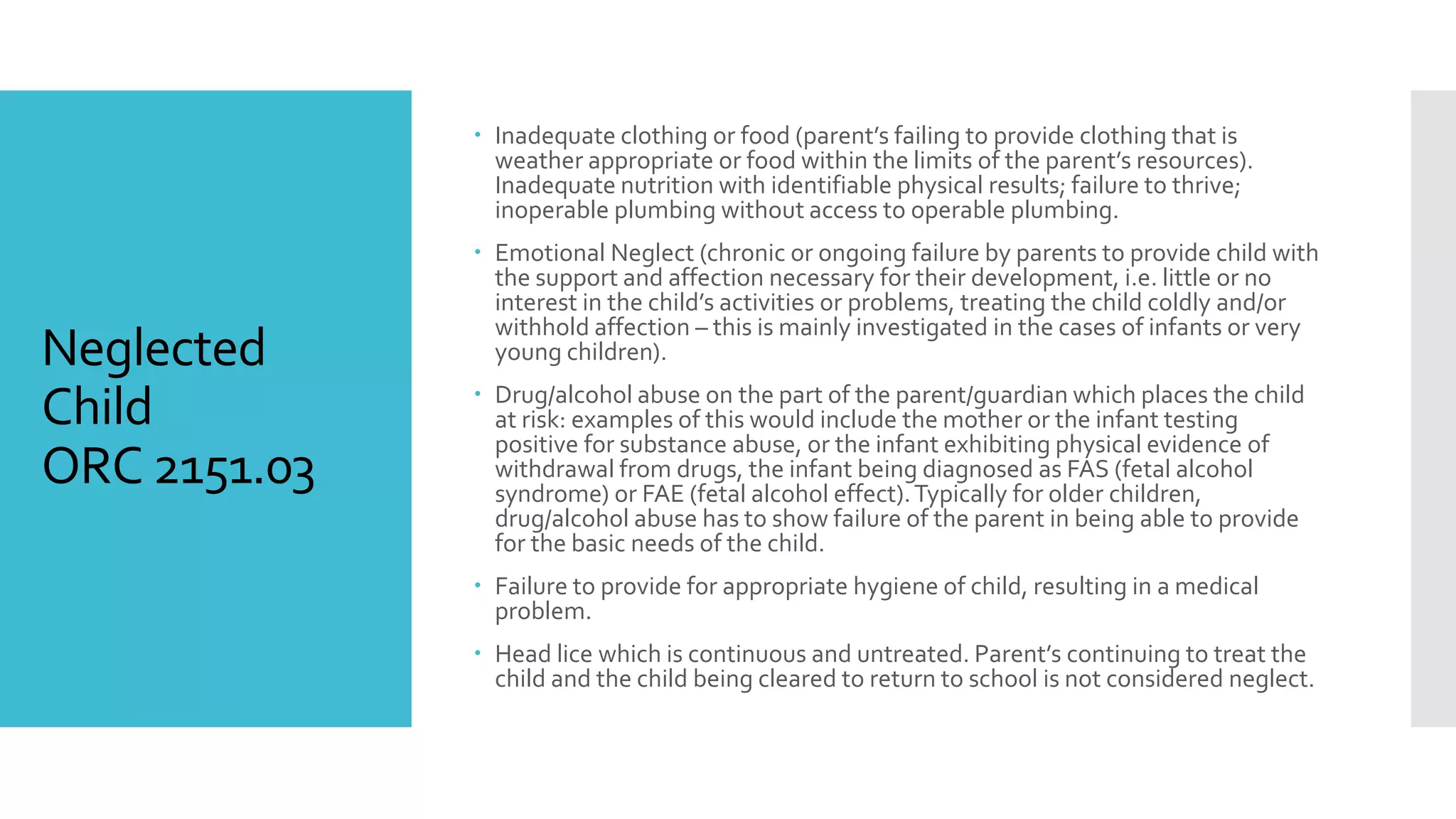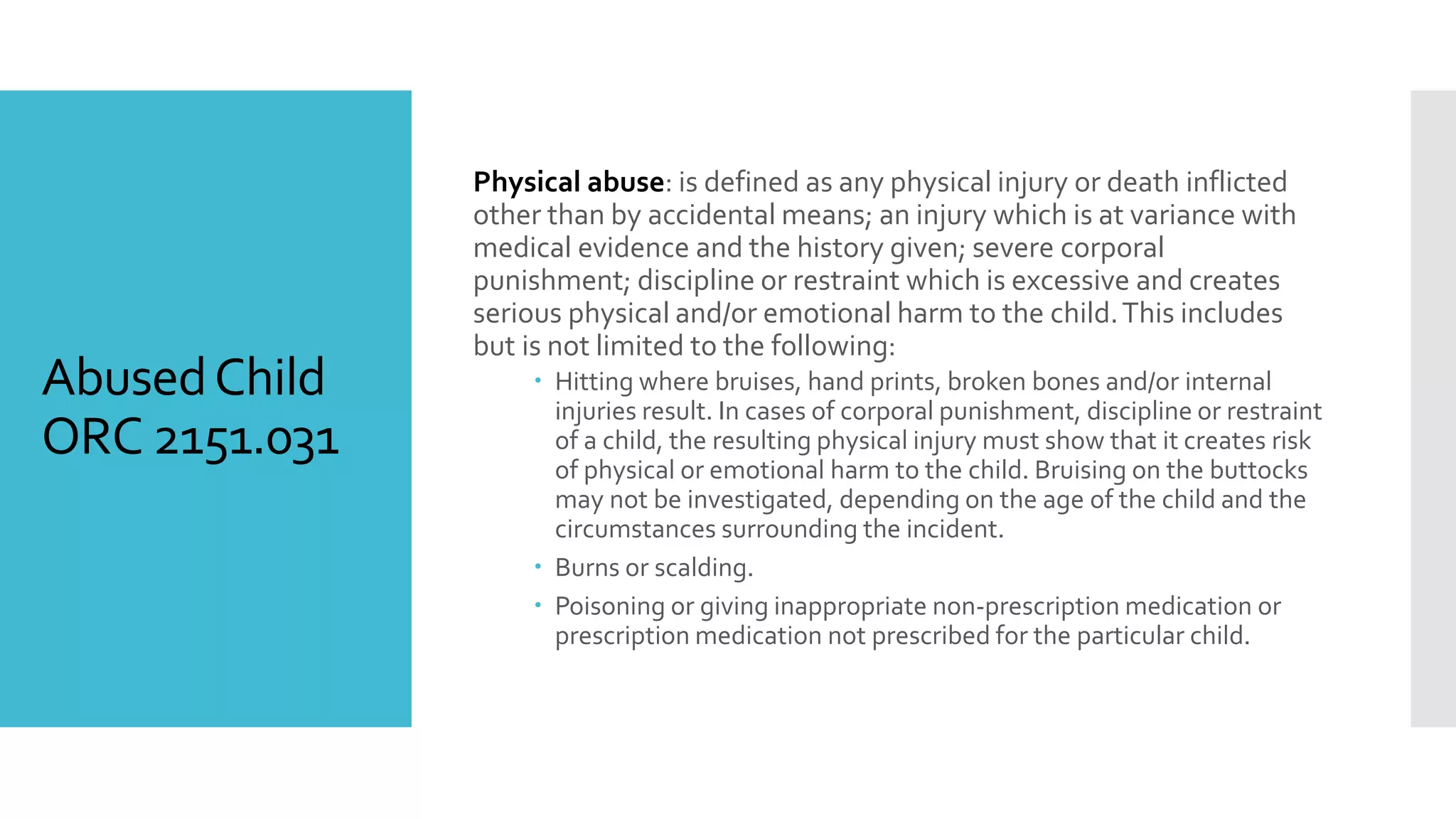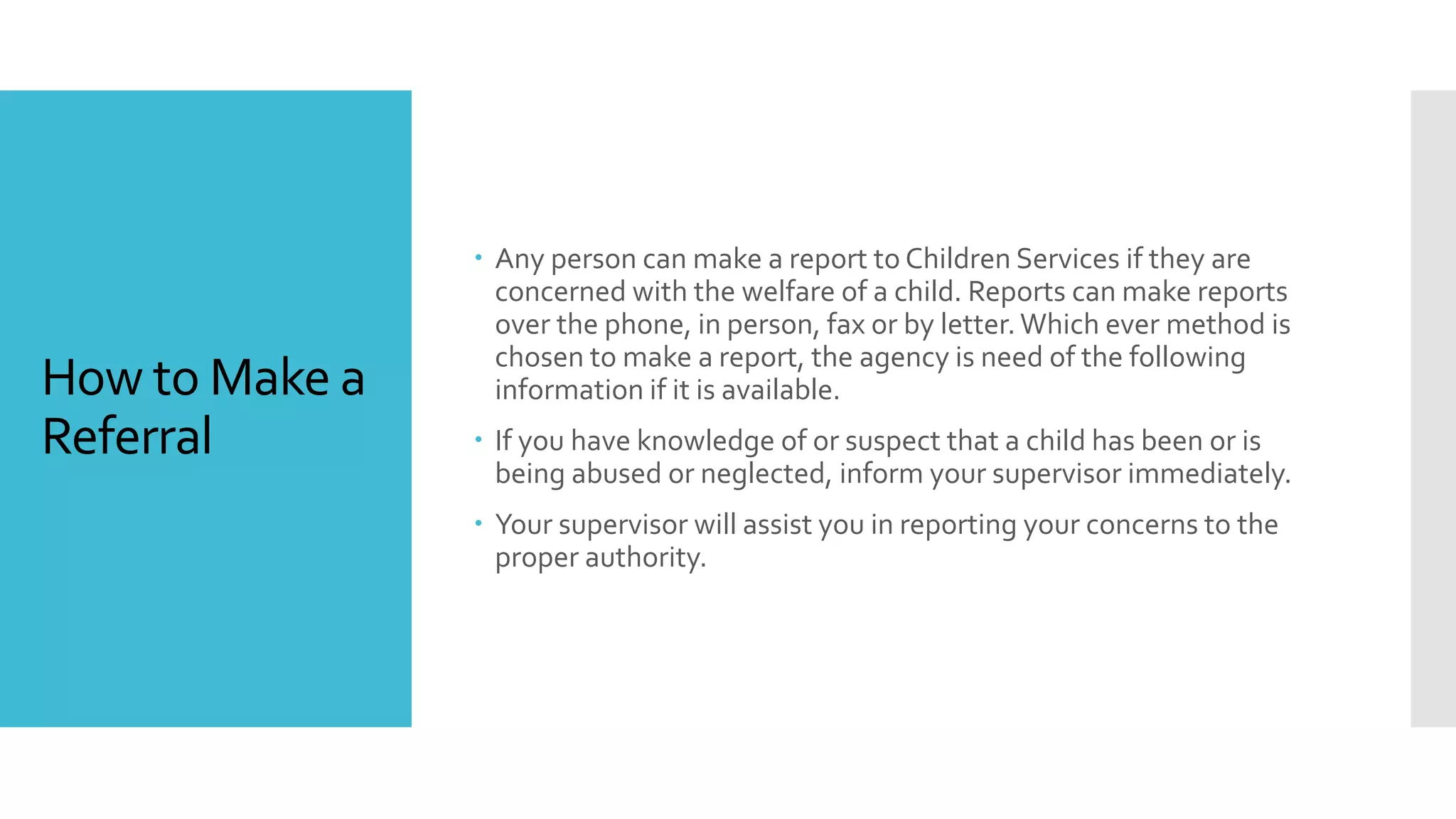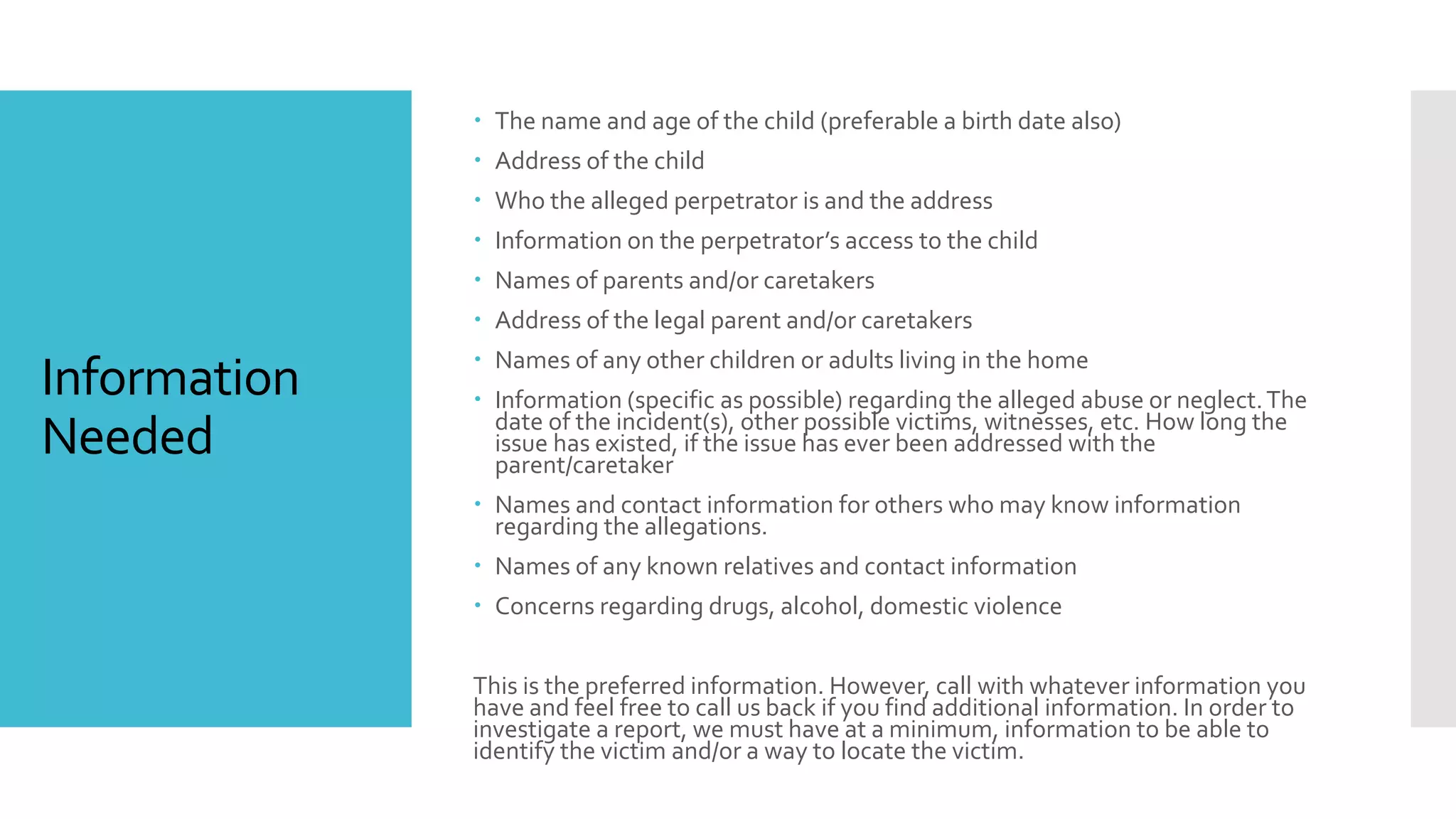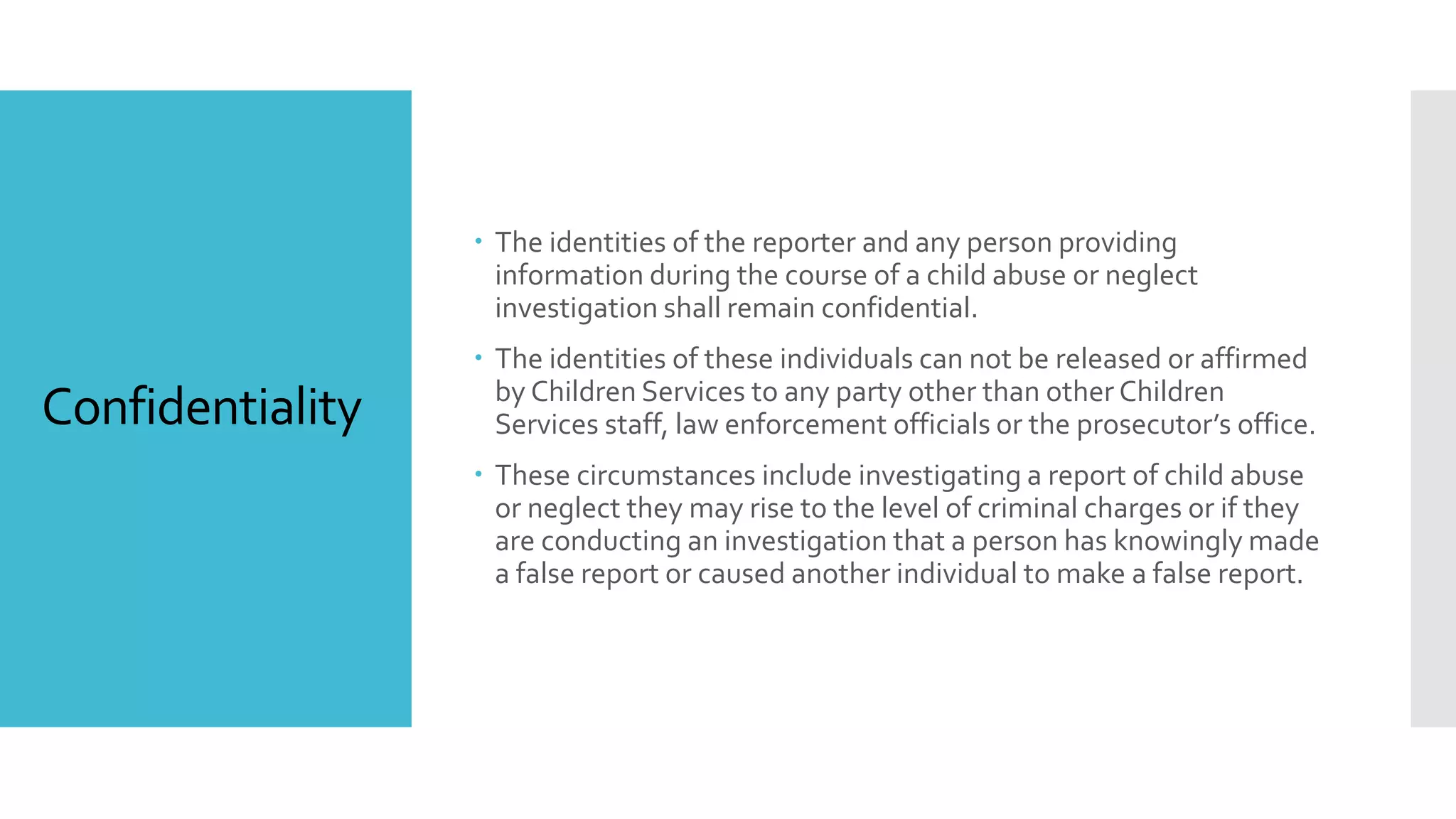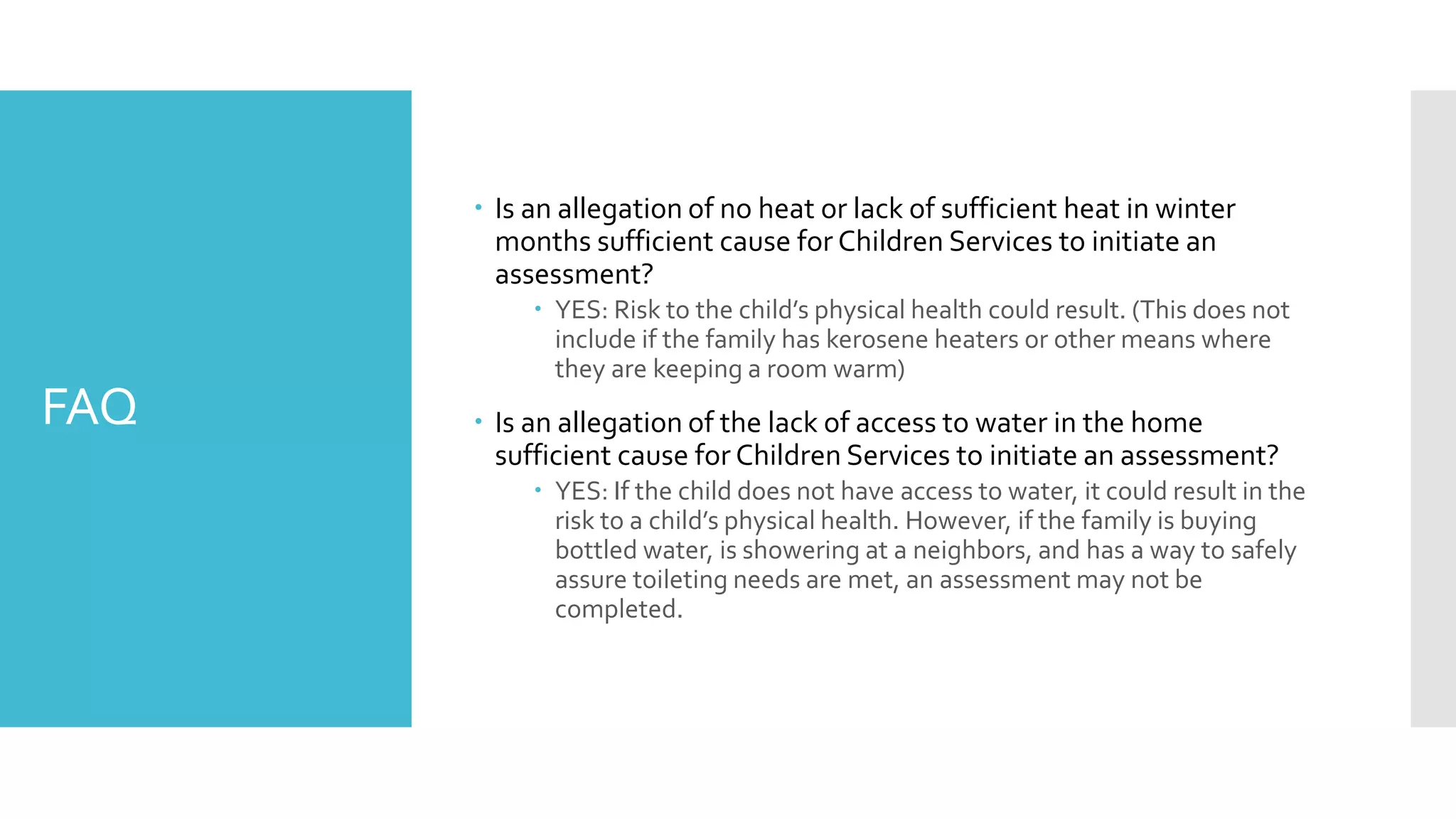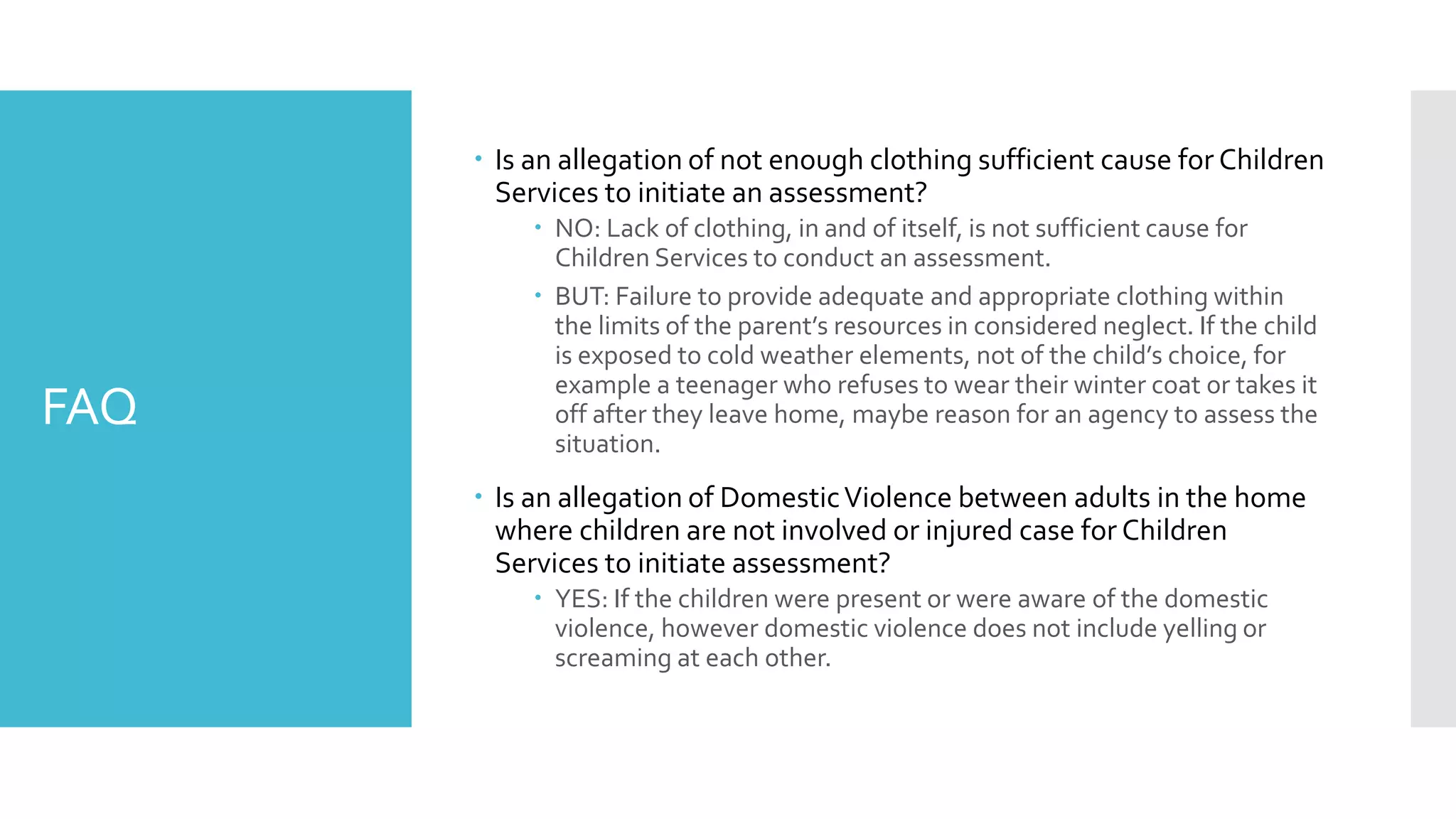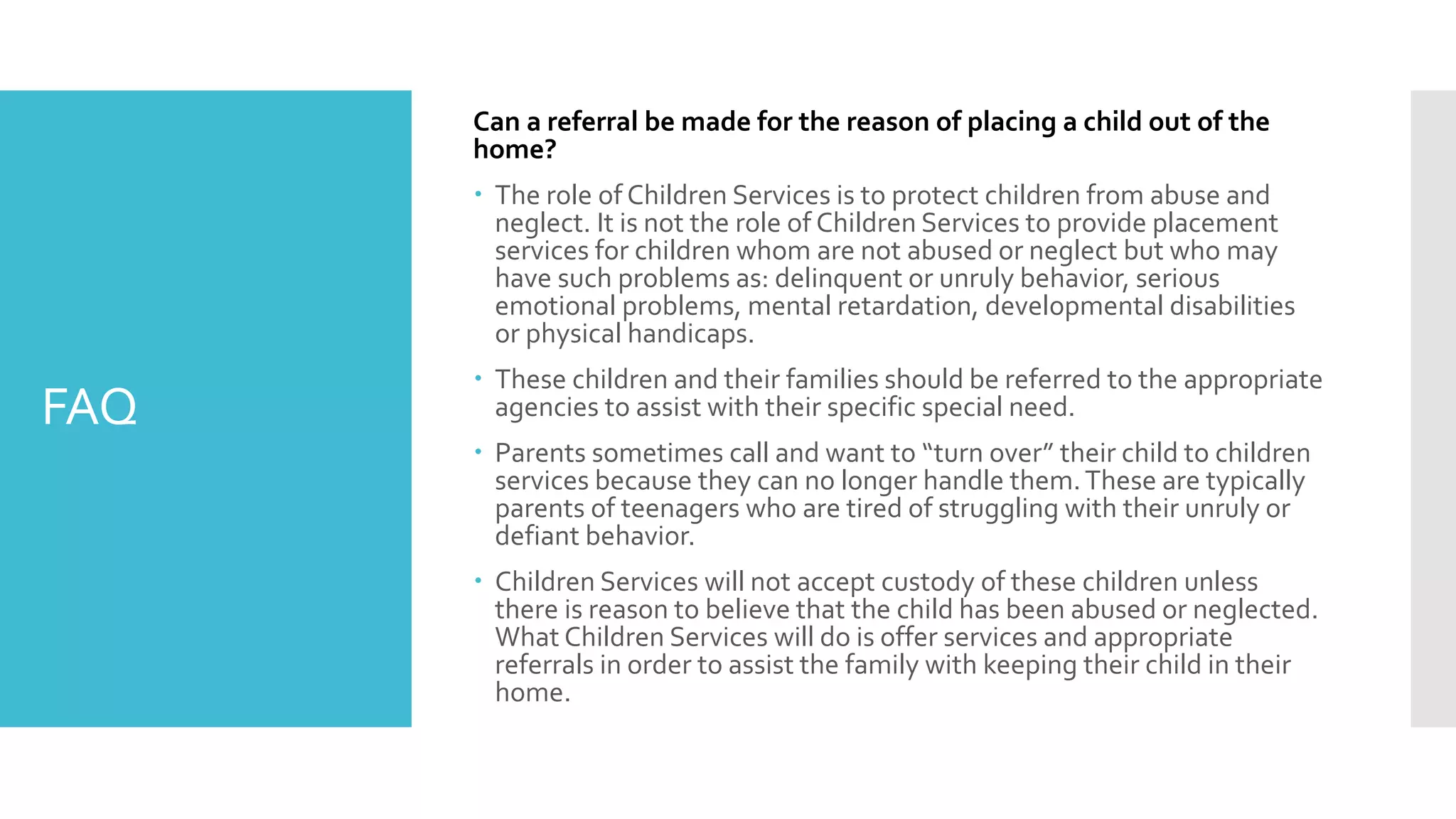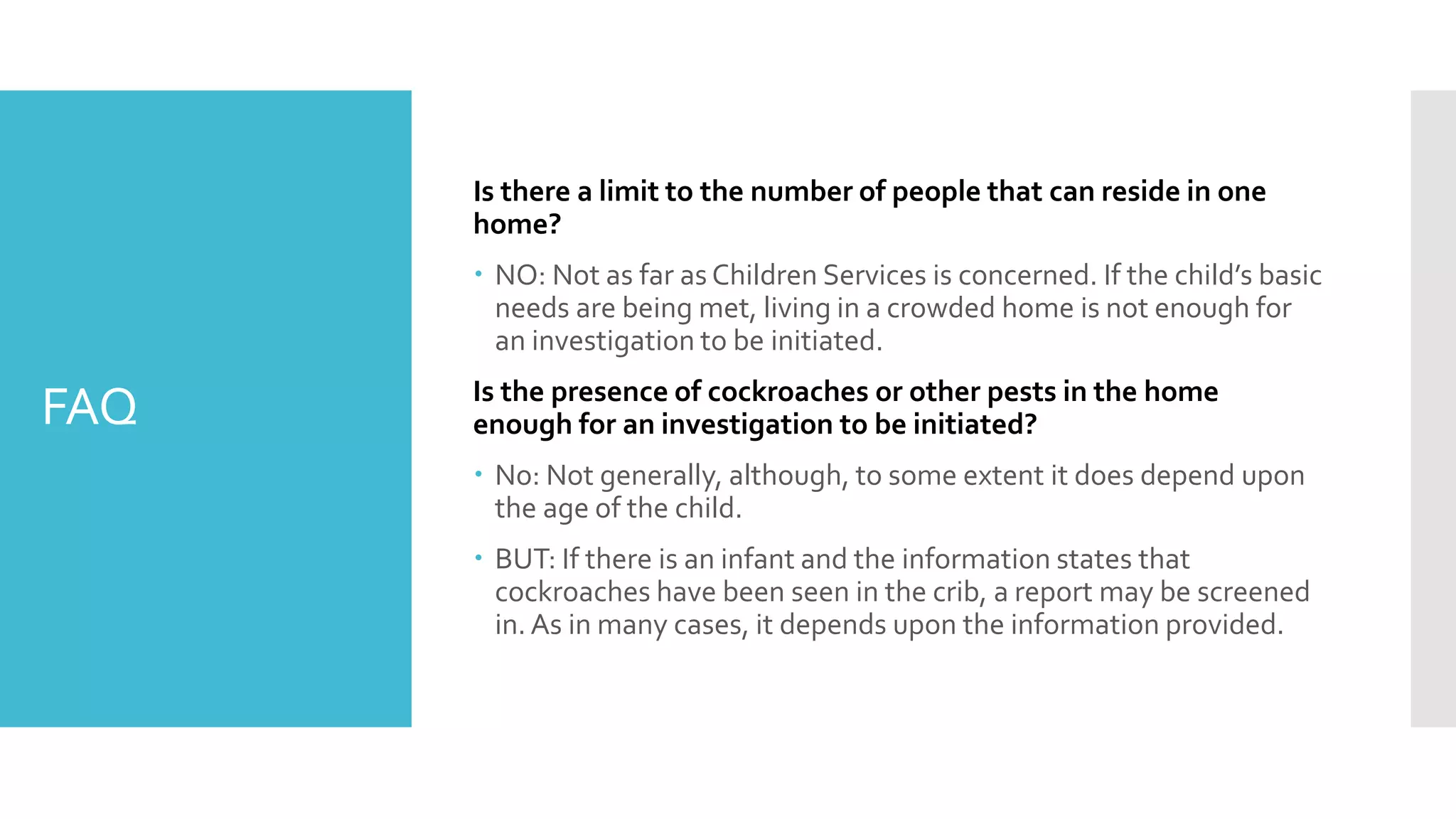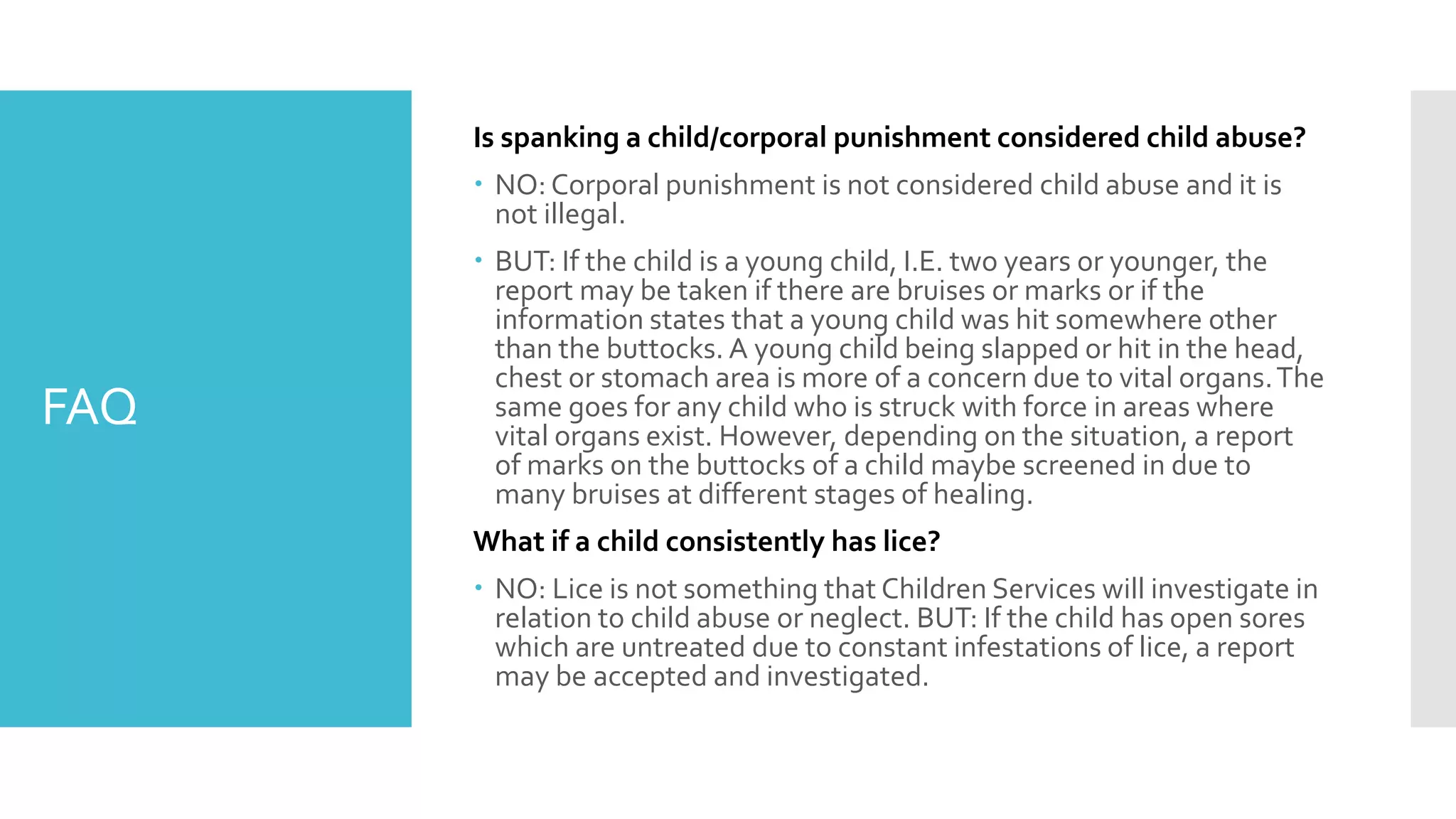This document provides information about mandated reporting requirements and definitions of child abuse and neglect according to Ohio law. It outlines what types of situations require professionals to report suspected abuse or neglect, including lack of basic needs, physical or sexual abuse, and exposure to dangerous conditions. The summary also describes the procedures that will be followed when a report is made, including screening, investigating, determining findings, and maintaining confidentiality of reports. House of New Hope employees are considered mandated reporters who must report suspicions of abuse or neglect.




